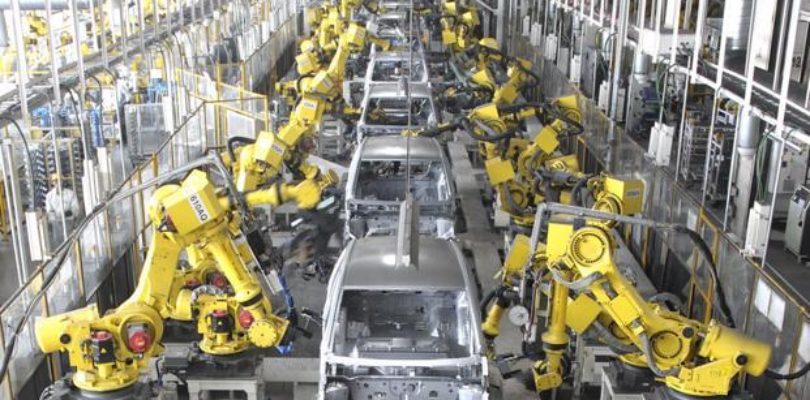As computers and technology continue to evolve at breakneck speed, it can be difficult for the average person to understand just how much work goes into getting computers to do things. Getting computers to ‘see’ and to identify images, for instance, is one task that many an engineer, robotics technician and data scientist have attempted to achieve over the years. This technology is only now starting to demonstrate its true potential, as seen in recent tests of self-driving vehicles, but it is far from being perfect. Nevertheless, thanks to machine learning and drastically improved image recognition technologies, industries like manufacturing are about to undergo a significant evolution.
Machine Learning and Image Recognition
Machine Learning refers to one of the ways Artificial Intelligence is used. It typically involves getting a system to take in large amounts of data to perform different analyses, essentially “learning” from whatever it is given in order to make educated future ‘predictions’.
Deep neural networks are one example of Machine Learning, which has resulted from scientists attempting to inspire themselves from neuroscience in order to create true AI. In deep neural networks, information is passed through layers, just like in the human brain. The first layer might recognize light pixels and dark pixels, the second layer might recognize different simple shapes, a third layer might identify more complex objects and shapes — while a fourth layer might be able to identify an actual object, like a vehicle, animal or even a person, based on its knowledge of what shapes tend to make up the subject in mind.
While the technology has been around since the 1980s, it has mostly been on the fringes of scientific investigation until recent years. This is because the technology was rather costly and complicated, and computers lacked the data and processing power to be truly useful. The use of deep neural networks has exploded into the forefront of science and technology in recent years, partly because large banks of data are now available thanks to the world wide web. The more information that can be fed to a system, the more accurate it becomes. The unorthodox use of Graphics Processing Units (GPUs) in deep-learning networks also means a highly-sophisticated network can be developed at a relatively cheaper cost.
By making use of technological advances like deep neural networks, today’s computers can therefore learn a number of things; from recognizing a user’s voice, to recognizing images of house cats, with high rates of success. For instance, once a system has been given millions of sample images of one object, its ability to identify a picture of the subject at a later date based on what it already knows is significantly improved compared to when it may have only had two pictures.
Given the enormous potential of deep learning, it is unsurprising that educational institutions are making significant efforts to create a future workforce in possession of important technical skills. As companies increasingly look to hire qualified personnel, whether they are trained as an electromechanical technician or a prize-winning neuroscientist, more students are signing on for higher learning involving machine learning. From online technology courses, partnerships between schools and big companies like Google, and startup incubators founded on college or university campuses, there are many ways to get informed and certified about the future of machines.
Image Recognition and Manufacturing
The real-world potentials of image recognition technology can create interesting, life-changing and profitable results for many. For instance, every major car company is now working at creating self-driving vehicles, leveraging image detection technology so that cars can spot obstacles in the road. Meanwhile, the medical industry is making use of image recognition in order to detect tumours from MRI scans, while the manufacturing industry is also benefiting from machine learning and improved image recognition technology. For instance, defect detection is set to become significantly more accurate in the next few years as companies begin to adopt new technology into their production lines.
Also, computers can be trained to detect defective parts through one of two ways: semi-supervised anomaly detection, or supervised machine learning. Given that defective parts are generally in the minority, creating a database that covers every different type of defect can be difficult. This rules out semi-supervised anomaly detection for many manufacturing situations, as this type of learning method requires the system to possess image samples and correct answer outputs for good parts and defective parts.
Semi-supervised anomaly detection on the other hand simply requires the system to possess one set of input images and correct answer outputs, limiting the amount of data it needs. This means that the system could for instance only possess information on good parts, thereby allowing it to identify anything that cannot be categorized as a ‘good part’. As a result, even unexpected or never before seen defects could potentially be identified, whereas in a supervised system, the machine would not necessarily be able to detect new types of defects.
This is only one of many ways in which the manufacturing industry and other businesses could potentially benefit from advanced machine learning and sophisticated image detection technology. As companies and research labs continue to explore the human brain, they are simultaneously creating opportunities for deep learning technology and neural networks to develop in tandem.
Automation is clearly the way of the future, whether it be on the factory floor, on the road, or even in a much more stereotypical lab setting. Given today’s scientists only have a basic map of the brain and understanding of how neurons truly work, the potentials of neuroscience and machine learning is easily seen, but not fully known just yet. The exciting, yet unclear futures of machine learning means that we still have a way to go; but the anticipation for further breakthroughs can only further reinforce the growth of programs and education for future scientists. A riveting time in innovation and AI, only time will tell just how far science will take us. Your passion for the unknown will dictate whether you’ll be part of this new science frontier. Are you ready?





